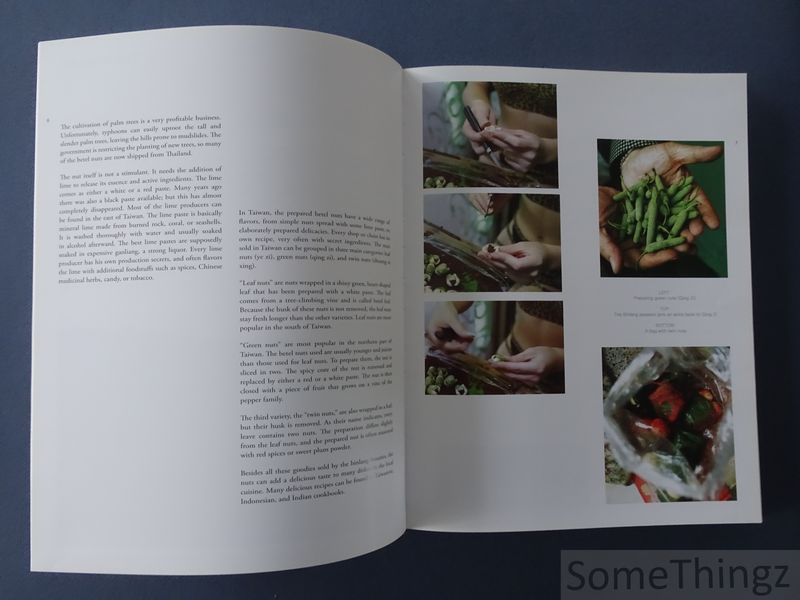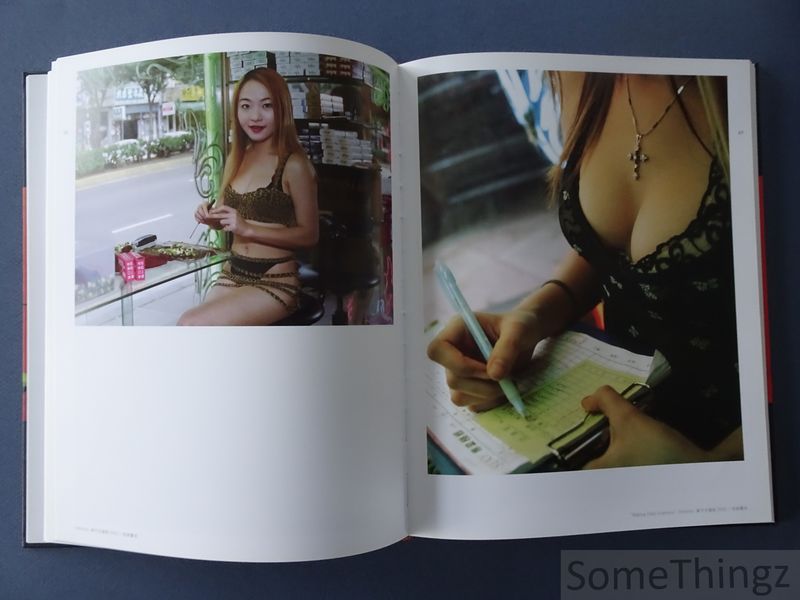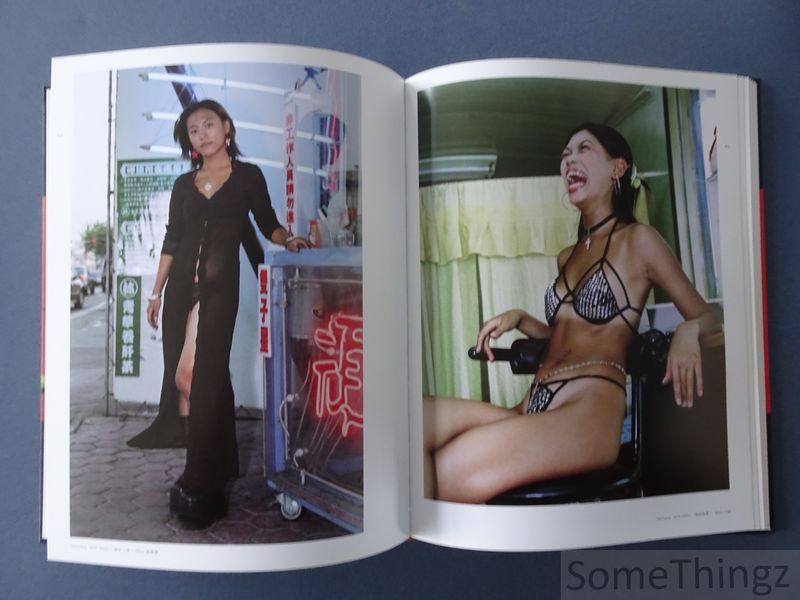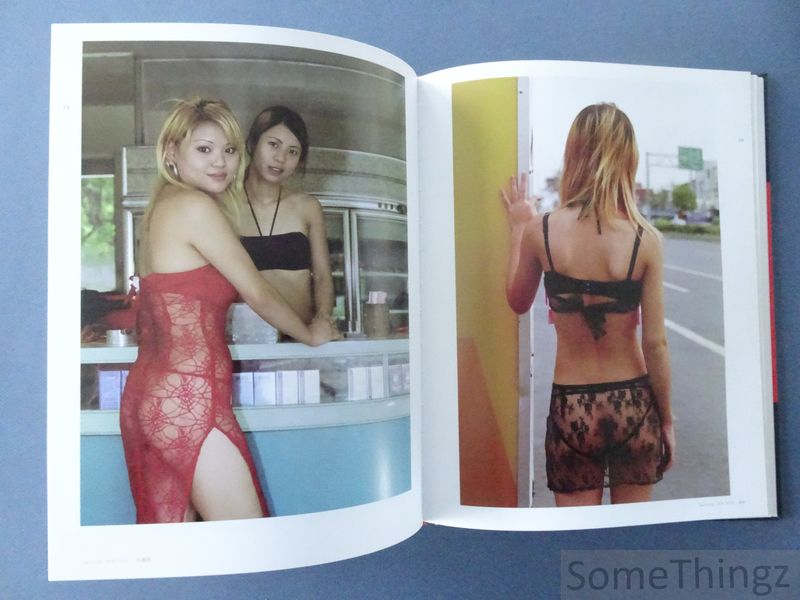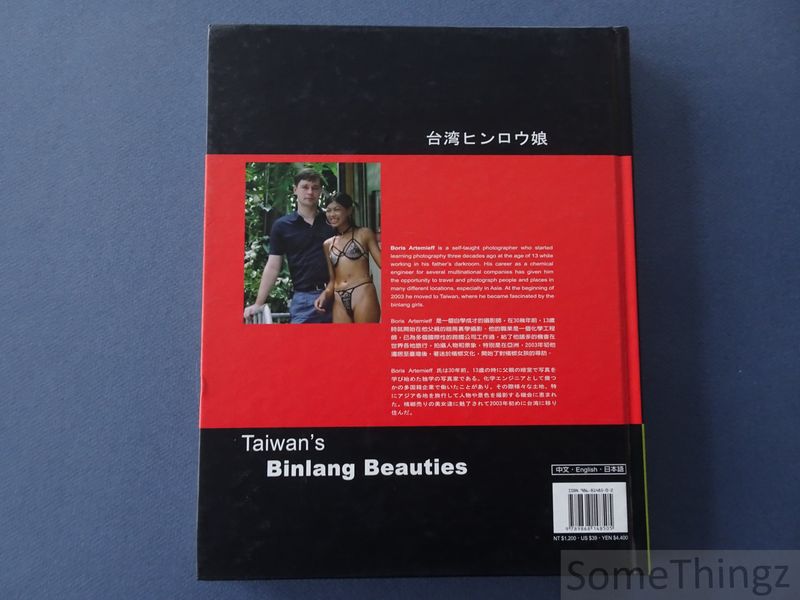BOOKS
Boris Artemieff.
Taiwan's Binlang Beauties. Portraits of a culture.
Zhonghe, EnjoyLife Publication, 2005.
€ 135.00
Bound, hardcover, illustrated boards, 156pp., 22.5x28.5cm., illustrated throughout in col., in very good condition (binding with very slight traces of use). Scarce!! ISBN: 9789868148505.
Betelnut beauties are one of the more colorful features of life in Taiwan. They certainly caught the attention of one foreign visitor, Belgian photographer Boris Artemieff, who lived in Taiwan from 2002 to 2006. While working for a German multinational company, he used his spare time to travel all over the island taking photos of betelnut beauties. Many of those pictures were published in his book titled "Taiwan's Binlang Beauties--Portraits of a Culture." In this article, Artemieff shares some of his observations about the betelnut business. What makes betelnuts, "binlang" in Mandarin, special in Taiwan are not the products but the women who sell them. They are known as betelnut beauties, and shops featuring them can be found throughout Taiwan, especially concentrated around the exits of highways and on the major access roads of cities. They are common in the nightlife districts of bigger cities and sometimes use regular employees during the day who switch to betelnut beauties at night. Chewing betelnut is a very old and widespread custom in many parts of Asia, especially popular in India, Indonesia and Malaysia, and also very common in the Philippines and Taiwan. The total production of betelnuts in Taiwan amounted to 138,095 metric tons in 2005, according to the Council of Agriculture. The popularity of betelnut chewing is restricted to Asia for two reasons. First, betelnuts have to be prepared on the spot because the fruit remains fresh for only a few hours. Second, chewing them stimulates the salivary glands, producing a large volume of red-colored saliva that has to be spit out. Betelnuts were used by Taiwan's aborigines, and betelnut trees were generally grown in remote mountainous regions. Growing betelnuts has become a profitable business, and vast areas are now cultivated for the palm trees. About 52,000 hectares were devoted to planting betelnuts in 2005, the COA reported. Their popularity causes serious environmental problems, however, since typhoons can easily uproot the tall and slender palm trees. This leaves the hills less stable and prone to mudslides. Men, especially taxi and truck drivers, are the shops' main customers, who rely on the betelnuts to stay awake when driving long distances. The nut is not a stimulant by itself. It needs the addition of lime to release its essence and active ingredients. Most of the lime producers can be found in the east of Taiwan. The lime comes as either a white or red paste and is basically mineral lime made from burned rock, coral or seashells. After washing thoroughly with water, it usually gets soaked in alcohol. The best pastes are supposedly soaked in expensive sorghum liquor, and often flavored with spices, Chinese medicinal herbs, candy or tobacco. Betelnuts are sold in mobile stalls alongside roads as well as in regular shops. The stalls sell soft drinks and cigarettes as well. Some of the mobile stalls are basically just metal boxes with big glass windows. Some shops even have wheels to move them in accordance with changing traffic regulations or local events. The fixed shops may be part of a chain. The owners are typically former betelnut beauties that started their own business. The fixed shops usually occupy the first floor of a building. The owner or the manager is often in the back of the shop, preparing the nuts and other ingredients. Nearly all the shops are equipped with closed-circuit television cameras to help protect the betelnut beauties from the groping hands of some of their customers, especially during the night shift. Also obvious are the huge signboards to make shops more visible to passers-by. Several shops use mirrors to give potential customers a clear view of the woman in the shop. Both fixed and mobile shops are usually very colorful. Late at night, after most people are asleep, betelnut shops brighten the entry roads into many cities. The garishly colored shops, lit by neon lights combined with the lone female character sitting in the middle on a high stool, resemble fine pieces of art. As far as I could ascertain, the practice of using scantily clad young women to sell betelnuts started around 15 years ago in Puli, Nantou County, and expanded rapidly across Taiwan. There are a wide variety of betelnut women, from ordinary to very sexy. Based on the women working in the shop, one can roughly distinguish three kinds of Taiwanese betelnut beauty shops. First, there are the shops where the women are ordinarily dressed. Although these women dress casually, their sales attitude is characterized by the same charm and friendliness expressed by their more flamboyant colleagues. These shops are mainly found in the northern counties of Taipei and Taoyuan, where the government regulates the clothes of the women and orders that navels have to be covered. On the other end of the spectrum are the shops where women hardly wear more than their own underwear. In this category, I believe the industry could use some self-regulation. After all, being sexy is less related to the amount of clothes than to the style and the attitudes of the women wearing them. The third group consists of the shops with genuine betelnut beauties. These shops are the most aesthetic ones, and some are real gems, in my opinion. They are mostly well maintained, and the staff lives up to the title of betelnut beauty. The need for special outfits has spawned an industry of its own. Many women dress fashionably. In most shops, they have a wide variety of costumes at their disposal. Outfits can cost from about US$30 to US$90, said Huang Xiao-ru, a supplier of costumes for betelnut beauties in Hsinchu. These can vary from G-strings to wedding dresses, nurse uniforms and other clothes aiming to stimulate men's fantasies. Distinctive also are their tattoos and high boots. The heavier the competition, the smaller and more transparent the clothes become. Especially in southern cities such as Kaohsiung, the stiff competition turns the clothes--or sometimes the lack of them--into a major selling point. While the women's looks are important, charm and charisma undeniably remain their major assets. Their charm contrasts sharply with the perfunctory welcome that convenience store clerks offer to customers entering their stores. Rumors abound that betelnut beauties are exploited by organized crime. My conversations with the women, however, tended to reveal that selling betelnuts is a business like any other. All over the world, employees can be blessed by having excellent bosses or cursed by having terrible ones. As a matter of fact, most of the women I talked to spoke positively about their managers. This is likely because the women are considered important assets in this distribution channel. A charming and dynamic woman can easily double or triple the turnover of a shop. Many of the women I met liked their job because it provided them with a higher income and more freedom than their friends enjoyed working at factory assembly lines. There were even a few university students trying out the betelnut business to make extra money during the school holidays. It is amazing that the betelnut women are able to be so charming in spite of the social and political pressure on their business, the uncertainty of employment when they get older, drunk drivers who cannot keep their hands to themselves and, last but not least, the police raids, often induced by competition. Buying betelnuts in Taiwan is a nice experience. It is not only the product that gets exchanged. The short interaction between a customer and betelnut seller may or may not be sexy, but it is always friendly. I would buy a box of betelnuts just to enjoy the woman's pleasing smile and have a short but pleasant conversation. (Copyright 2007 Boris Artemieff) (https://taiwantoday.tw/news)


